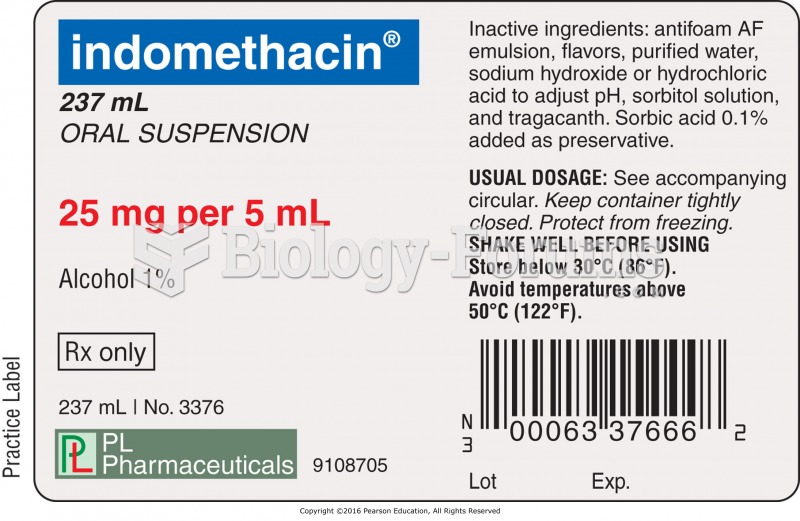|
|
|
Human stomach acid is strong enough to dissolve small pieces of metal such as razor blades or staples.
Most childhood vaccines are 90–99% effective in preventing disease. Side effects are rarely serious.
The longest a person has survived after a heart transplant is 24 years.
Tobacco depletes the body of vitamins A, C, and E, which can result in any of the following: dry hair, dry skin, dry eyes, poor growth, night blindness, abscesses, insomnia, fatigue, reproductive system problems, sinusitis, pneumonia, frequent respiratory problems, skin disorders, weight loss, rickets, osteomalacia, nervousness, muscle spasms, leg cramps, extremity numbness, bone malformations, decayed teeth, difficulty in walking, irritability, restlessness, profuse sweating, increased uric acid (gout), joint damage, damaged red blood cells, destruction of nerves, infertility, miscarriage, and many types of cancer.
Pubic lice (crabs) are usually spread through sexual contact. You cannot catch them by using a public toilet.







